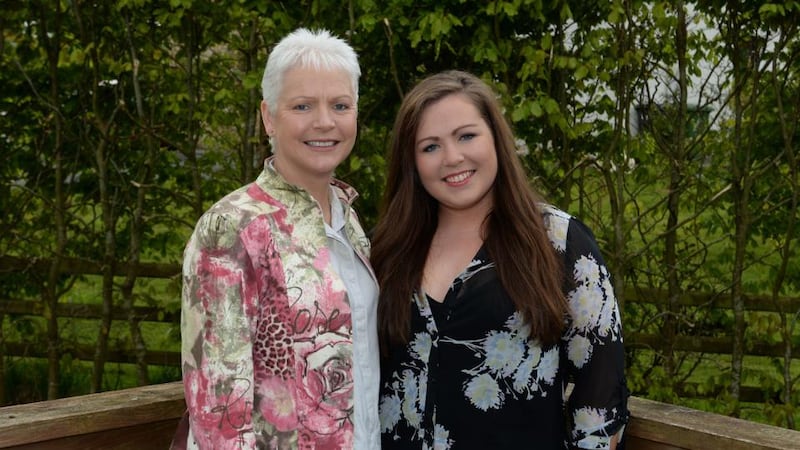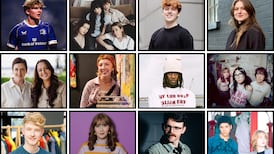When Angelina Jolie told the world this week that she was shaping her own destiny by having a preventive mastectomy after testing positive for a breast-cancer gene, many Irish women in her situation were cheering her on.
Among them was Sarah McAvinchey, a 19-year-old student at Trinity College Dublin, who discovered last year that, like Jolie, she has the BRCA1 gene. She has chosen to have a double mastectomy when she finishes college.
“For a beautiful, sexual woman and icon like Angelina Jolie to be a role model for all us terrified people, like me, my younger siblings and cousins who are at high risk of having the gene, is very brave and definitely a positive thing. If she can do it, then we can to it,” says McAvinchey.


Jolie, who is 37, had herself tested because her own mother had died at 56 of breast cancer and because she had been identified as carrying BRCA1, as happens in 5 to 10 per cent of cases. The gene gives an 87 per cent risk of breast cancer and 50 per cent risk of ovarian cancer.
But the double mastectomy and breast reconstruction that the actor underwent are not just for the elite: they’re a choice being made by many Irish women.
McAvinchey discovered she had this potentially deadly gene shortly after her 18th birthday. She was tested because her mother, Bronagh, her mother’s four sisters and one of her mother’s two brothers had previously tested positive; all five of the sisters had had preventive double mastectomies and their ovaries removed – today, Bronagh jokes, they enjoy comparing the perfection of their beautifully reconstructed breasts.
McAvinchey had learned that her mother had breast cancer in 2007, on her first day of secondary school; Bronagh was 42 at the time. McAvinchey, who then helped her mother and aunts fundraise, knew that being tested on her 18th birthday was inevitable.
“It was horrible to say the least,” McAvinchey says of the period between being tested, before Christmas 2011, and awaiting results that came in January 2012. “When it came back positive it knocked me back a bit, and it took the best part of a year to come to terms with. It’s scary, the worst thing that has happened to me so far, but not the worst thing that could have happened to me. I am really happy that science and medicine are pulling for us. And I am in control now,” says McAvinchey.
Unusually, the BRAC1 gene runs in the male line, from McAvinchey’s maternal grandfather. Her younger brother and sister are at risk, as are her 16 cousins aged seven and upwards – all of whom will be tested when they reach their 18th birthdays.
“They are my main priority. I am the one they turn to for advice. I made the decision that I will get preventive surgery, and in my opinion it’s a miracle,” says McAvinchey.
Although it is an incredible burden for a teenager to face a double mastectomy in her youth, with the eventual removal of her ovaries also on the horizon, McAvinchey chooses to see this as a positive.
“I have spent the last year overcoming my fear and anger and everything to do with the gene. Now I can do this interview and work with the cancer society in college because it does get better. Whatever I can do to raise awareness, I will,” she says.
Bronagh, her four sisters and brother and all of their spouses speak together regularly about the discovery of the gene that has changed their lives; they are determined to be positive.
For McAvinchey, her siblings and cousins, this has meant being part of the family cancer story from childhood. “I wouldn’t change it. We are a far better family for it,” she says.
Because of the genetic testing and the preventive surgery, Bronagh has turned out to be the only member of her generation of the family to get breast cancer. “Being proactive was definitely the right thing to do,” she says.
Sarah McAvinchey will be chair of TCD’s cancer society next year and has decided to be open about her story in order to raise awareness and reduce fear.
Going public
Telling it all – and showing it all – was the performer and writer Anne Gildea's choice when she was diagnosed with breast cancer, in 2011, and participated in a documentary about her experience of having a breast removed.
On Wednesday this week, as she was reading and hearing about Angelina Jolie, the 45-year-old, who has a family history of breast cancer, was visiting a clinic to find out her genetic-test results. They were negative.
“I admire Jolie for coming out about it. For a sexy woman like her, whose whole position depends on her physical appearance, it is quite impressive and brave. She’s done a great service for other women.”
Gildea will perform with the Nualas at the Forbidden Fruit Festival next month, a few days before having her missing breast reconstructed and her remaining breast surgically moulded to match it. “I feel so privileged to be offered it. I feel like a freak show naked, and I am so looking forward to the operation,” she says.
Like Jolie, Gildea has used her fame not just to go public about her cancer but also to help herself cope with it – a double-edged sword. She was filmed during her surgery and treatment, and she also filmed herself in hospital, reacting to what was happening to her by deciding what would be good on film.
“I was deflecting having to deal with the cancer emotionally by doing it that way. I was commodifying it. It was a way of coping at that time. I know actresses and presenters who would not share their cancer for professional reasons, but I was in the position where it would not affect the work. I used going public to go through the cancer.”
After this outing on television she became depressed and turned to psychotherapy, using a counsellor who is “amazing – spot on – and she will challenge me”.
Gildea believes that people in the public eye have an "instinct" to share with the world, as she will do in her book I've Got Cancer, What's Your Excuse? , to be published in September.
“Writing it has been so stressful and really upsetting, but with the TV programme, the book and the counselling I have turned the cancer into a massively positive thing.”
Family first
For young women who have one of the four known breast-cancer genes, and want preventive surgery, it seems a cruel schedule to have to time marriage and children around the pressing need to remove breasts and ovaries, but it worked for Aileen McGeough.
The 33-year-old was engaged at the time and had barely known her own mother, who had died at the age of 33. “I can’t wait till I’m 34, to tell the truth,” says McGeough, who had a preventive double mastectomy six years ago next week, before her wedding, then conceived a first baby on her honeymoon.
Within her family, three generations of children had mothers who had died very young, and McGeough wanted not only to have children but also to see them grow up.
Now a mother of three, McGeough will have her ovaries removed when her family is complete.
“I’m delighted that someone with such a high profile as Jolie would speak about this,” she says. “I’ve done exactly what she has done for the same reasons as she did it. Jolie has shown that you are not mutilating your body by doing this; your breasts look no different than before.”
Breast reconstruction is so well developed in this country that women are routinely offered it, sometimes even before their mastectomies. Gildea, for example, was referred to a plastic surgeon at St James’s Hospital before she even had her mastectomy, to reassure her that “new” breasts were a realistic choice.
Yet the stigma means that fewer than 10 per cent of women here have reconstruction, according to Catriona Lawlor, a reconstructive breast surgeon at St Vincent's University Hospital in Dublin. It is a statistic that is repeated worldwide.
Jolie’s willingness, as a sex symbol, to flaunt her new breasts is not just a positive message for women affected by breast cancer, Lawlor believes, but also “testament to the results achieved by reconstruction”.
For women such as Sarah McAvinchey, with reconstruction a few years in her future, and Anne Gildea, looking forward to it in June, Jolie’s candour offers hope. Those who have spoken publicly in this article do the same for other Irish women.










